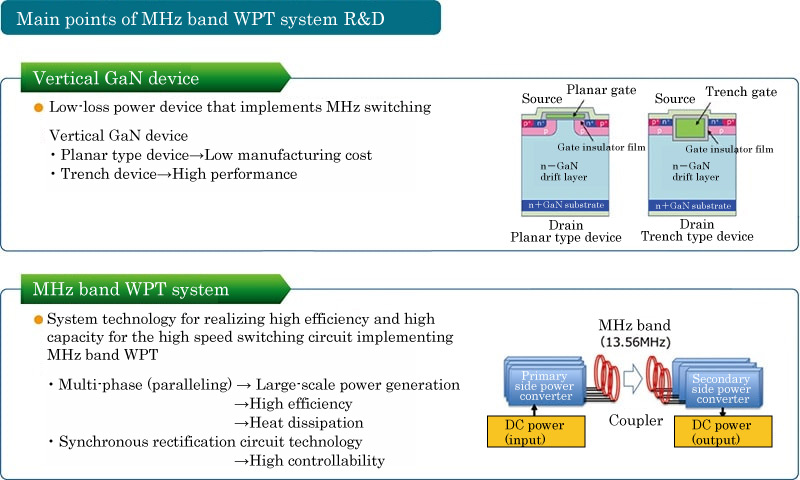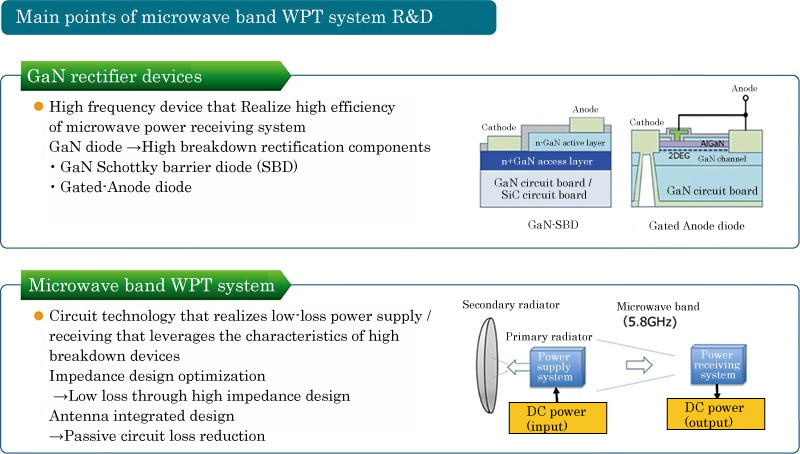Energy systems of an Internet of Energy(IoE) society
Theme B “IoE common platform technology”
-
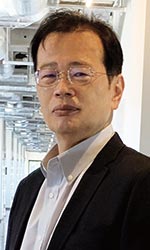
Sub-PD
Yoshikazu Takahashi
Professor, Center for Innovative Integrated Electronic Systems, Tohoku University
Background and Purpose
For the energy systems of a society that fuses energy and information (IoE society), in addition to energy creation functions and storage functions, it will be necessary to have energy transmission technology enabling flexible energy management as well as a power module that takes charge of energy conversion as an interface linking this.
Current power modules have many custom parts for each application, and it is predicted that the shortage of developers and development performance will worsen against the predicted explosive increase in applications going forward. In addition, the power modules are unfit for instant feedback, predictions, and transmission between power electronics networks responding to irregularly fluctuating power sources because the power module supports analog control. In order to break through these deficiencies, there are high hopes for development of a universal smart power module that allows universal and smart properties to coexist, creates the innovation of energy conversion in an IoE society, and contributes to improving that development efficiency of power electronics products, by freely combining ultra-high speed digital control, core packages and WBG devices that are expected to be low-price.
In an IoE society, it is necessary to have power transmission technology with flexible connectivity and controllability that can respond to the increase in energy demand and the diversification of its consumption forms. WPT technology is being raised as technology to respond to this demand. WPT technology is partially being utilized for charging mobile devices and power supply systems for stationary EVs, but in terms of expanding choices and application fields for WPT technology, and as technology enabling high capacity transmission functions as well as miniaturization of devices, there are hopes for development of WPT technology utilizing MHz bands and microwaves.
For Theme B, technologies contributing to ① “energy conversion” and ② “energy transmission” are being executed.
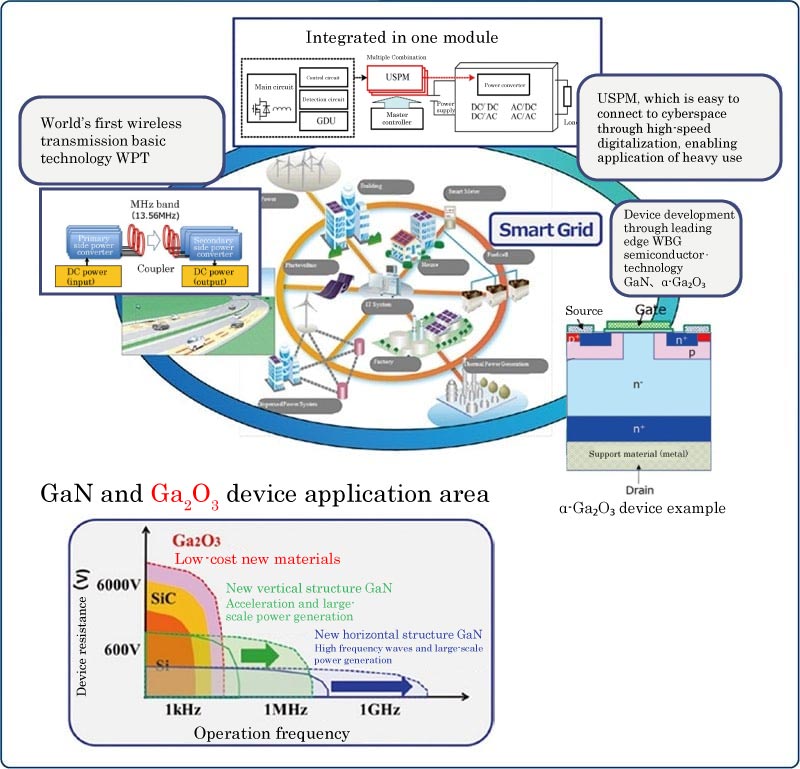
B-① IoE common platform technologies focusing on applications for energy devices
Aim to decrease the total cost for power systems by developing the USPM that enables response to diverse input power sources including renewable energy. Also, develop USPM that enables high-speed switching utilizing materials science progress.
We work on three R&D themes in this research.
Specific functions of USPM
- Universal: Uses high-speed digital driving control with the core power module, fully leverages excellent characteristics of WBG devices, and supports many different power electronics applications and varieties.
- Smart: Enables optimal control according to load conditions and differences in characteristics between units through digital control
- Low cost: Standardizes the core power modules and minimizes individual designs.
Respond to IoE power converter system with the combination for USPM of the new WBG + high-speed digital control + unit module.
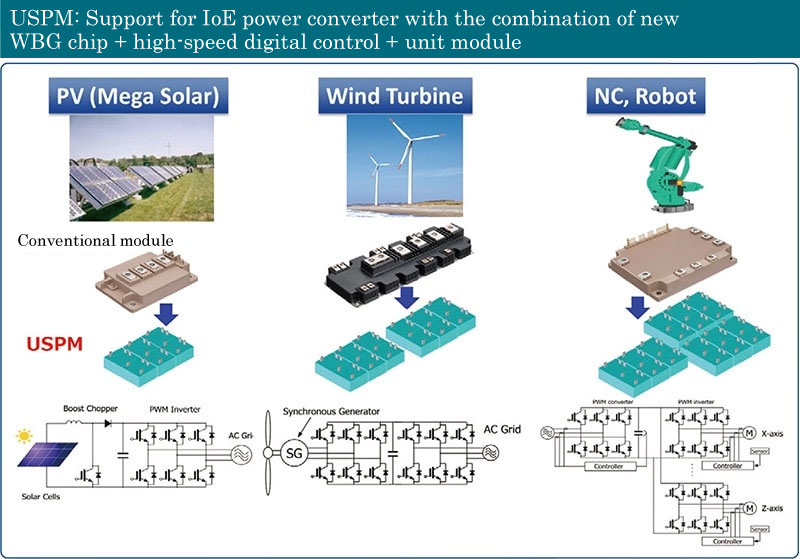
(1) Development of noise-free USPM with ultra-high speed digital control and application technologies
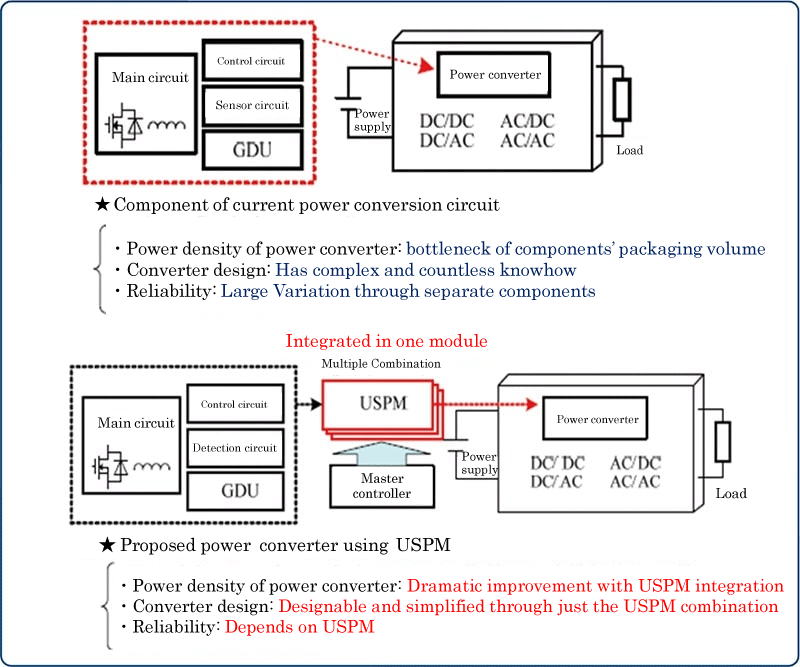
(2) WBG-equipped power module enabling operation at high power density and high temperatures
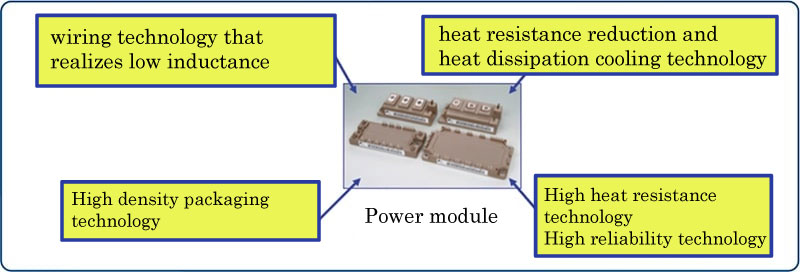
(3) Development of power MOSFET using corundum-structure gallium oxide
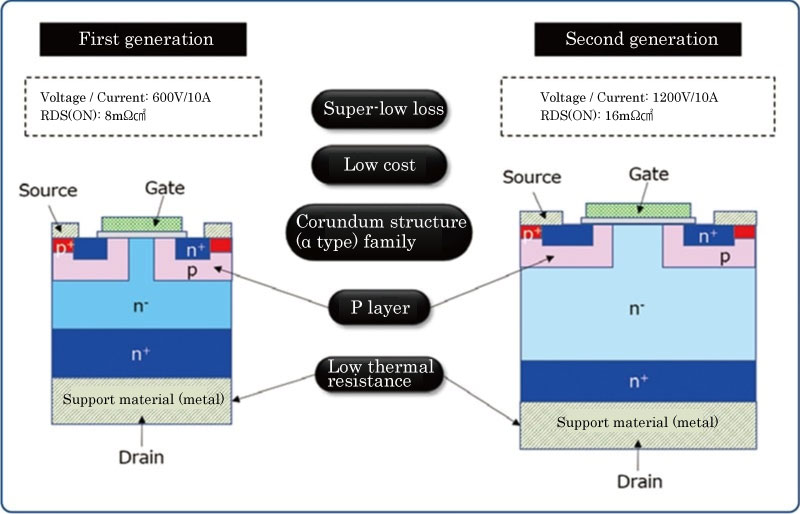
B-② IoE common platform technologies focusing on application in WPT systems
Develop basic technologies for electro-magnetic coupling type WPT systems using MHz bands and radiation-type WPT systems using microwaves which are desired to be new power supply systems. Implement R&D for devices and circuits suitable for making various WPT systems smaller, more efficient, and have higher power capacity, and conduct proof of concept as WPT systems with 13.56 MHz bands and 5.8 GHz bands. Through these R&D results, together with responding to diversifying power consumption needs in an IoT society, contribute to optimization and decarbonization of energy management throughout society.
